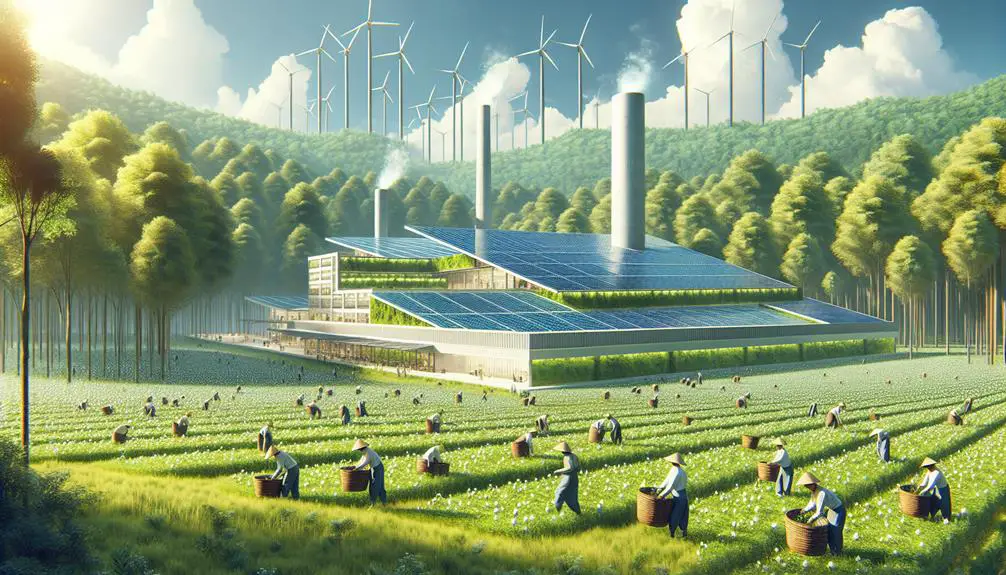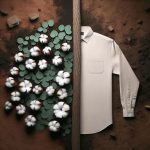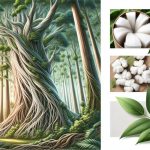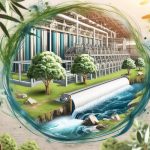When you consider sustainable fabric production methods, you're looking at a range of practices designed to minimize environmental impact. From organic cotton farming to zero-waste manufacturing, each method plays a vital role in reducing chemical pollution and water waste. Have you ever thought about how fabrics like Tencel and Lyocell, derived from sustainable wood pulp, can transform the industry? These materials not only offer versatility but also help in lowering the carbon footprint. The question is, how do all these innovative techniques come together to create a more sustainable future for textiles?
Table of Contents
Key Takeaways
- Closed-loop production minimizes waste and emissions, enhancing sustainability.
- Low-water dyeing technologies and digital printing significantly reduce water consumption.
- Natural dyes from plants and minerals offer eco-friendly alternatives with vibrant colors.
- Zero-waste manufacturing maximizes fabric utilization and minimizes offcuts.
- Biodegradable fabrics like hemp, bamboo, and Tencel decompose naturally without harmful residues.
Organic Cotton Farming
Organic cotton farming focuses on cultivating cotton without synthetic chemicals, promoting a healthier environment. By mastering this method, you'll contribute to soil regeneration and protect ecosystems. One key practice is crop rotation, which involves alternating cotton with other plants to maintain soil fertility. This reduces the need for artificial fertilizers and helps combat soil erosion, ensuring long-term productivity.
In organic cotton farming, pest management is vital. Instead of relying on harmful pesticides, you can use natural predators and biopesticides to keep pests in check. This approach not only safeguards beneficial insects but also prevents pesticide residues from contaminating the soil and water. By implementing these strategies, you'll create a balanced ecosystem where pests are naturally controlled.
Achieving organic certification is necessary to validate your farming methods. Certification involves meeting strict standards that prohibit synthetic chemicals and promote sustainable practices. To obtain this, you'll need detailed records of your farming activities and undergo regular inspections. This certification not only boosts your credibility but also opens access to markets that value sustainability.
Hemp Fiber Production
When you look at hemp fiber production, you'll find efficient cultivation and harvesting techniques that make it a sustainable choice.
Hemp requires less water and fewer pesticides than other crops, reducing its environmental impact.
Cultivation and Harvesting Techniques
Hemp fiber production starts with selecting high-quality seeds and preparing the soil to secure ideal growth. You should focus on soil regeneration and crop rotation to maintain soil health and fertility. By rotating hemp with other crops, you can prevent soil depletion and enhance nutrient cycling. This method secures you're sourcing sustainable fibers while supporting ethical labor practices, as healthy soil reduces the need for chemical inputs and fosters safer working conditions.
Once the soil is ready, plant your seeds in well-spaced rows to allow adequate sunlight and airflow. Regularly monitor the growth, securing the plants receive enough water, but avoid overwatering to prevent root disease. When it's time to harvest, cut the stalks close to the ground, and let them dry in the field for a few days. This drying process, known as retting, helps separate the fibers from the rest of the plant material.
Here's a quick reference table to guide your hemp cultivation and harvesting process:
| Step | Key Points |
|---|---|
| Seed Selection | Choose high-quality, resilient seeds |
| Soil Prep | Focus on soil regeneration, crop rotation |
| Planting | Secure proper spacing and sunlight |
| Monitoring | Regularly check water levels and health |
| Harvesting | Cut stalks, dry via retting |
Environmental Impact Benefits
Reducing carbon emissions is one of the key environmental benefits you'll observe with hemp fiber production. Hemp plants absorb more CO2 than trees, directly reducing your carbon footprint. When you select hemp, you're choosing an energy-efficient crop that requires fewer resources and promotes a healthier planet.
Integrating hemp into your production processes also aligns with the principles of a circular economy. Hemp can be cultivated on marginal lands and requires minimal pesticides and fertilizers, contributing to significant waste reduction. Its rapid growth cycle guarantees that it's ready for harvest in just a few months, allowing for multiple planting cycles per year. This efficiency means you'll use less land and water, further minimizing environmental impact.
Furthermore, hemp fibers are incredibly durable and biodegradable. By using hemp, you're not only embracing a sustainable material but also guaranteeing that your products don't contribute to landfill waste. The longevity of hemp fibers means your products will last longer, reducing the need for frequent replacements.
Bamboo Fabric Techniques
Crafting bamboo fabric involves a unique process that transforms bamboo pulp into soft, breathable textiles. You'll find that bamboo fabric innovations are at the forefront of sustainable fashion design. The journey starts with harvesting bamboo, known for its rapid growth and minimal need for pesticides. The bamboo is then pulped, creating a viscous solution which is spun into fibers. These fibers are woven into luxurious fabrics, celebrated for their eco-friendly textile advancements.
Using bamboo fibers offers numerous benefits. They're naturally antimicrobial, hypoallergenic, and have excellent moisture-wicking properties. This means your bamboo clothing stays fresh longer and feels comfortable against your skin. Plus, bamboo's sustainability credentials are impressive. It regenerates quickly, absorbs more carbon dioxide than cotton, and requires less water to grow.
| Process Step | Description | Benefit |
|---|---|---|
| Harvesting | Fast-growing bamboo is sustainably sourced | Minimal pesticide use |
| Pulping | Bamboo is pulped into a viscous solution | Eco-friendly textile advancements |
| Fiber Spinning | Solution spun into soft, durable fibers | Bamboo fiber benefits |
Recycled Polyester
Recycled polyester offers a sustainable alternative to traditional polyester by repurposing plastic waste into durable, high-quality fabrics. By transforming discarded plastic bottles and other upcycled materials, you can help reduce landfill waste and lower the environmental footprint of your clothing production. This innovative approach not only conserves natural resources but also lessens the dependency on virgin petroleum.
When you choose recycled polyester, you're supporting a closed loop production system. This means that once the polyester fabric has outlived its initial purpose, it can be reprocessed and reused, creating a continuous cycle of sustainability. This closed loop system stands in stark contrast to the linear model of traditional polyester, where resources are extracted, used, and then discarded.
Implementing recycled polyester into your fabric production doesn't compromise quality. The material maintains the strength, flexibility, and resilience of virgin polyester, making it suitable for a wide range of applications, from activewear to fashion.
Tencel and Lyocell
When you explore Tencel and Lyocell, you'll notice their eco-friendly manufacturing processes that minimize environmental impact.
These fabrics aren't only biodegradable but also highly sustainable.
Plus, their versatility makes them perfect for a wide range of textile applications.
Eco-friendly Manufacturing Processes
Tencel and Lyocell, derived from sustainably sourced wood pulp, offer eco-friendly alternatives to traditional fabric manufacturing processes. You can appreciate the significant reduction in environmental impact these fabrics provide.
The production process utilizes a closed-loop system, which means the solvents and water used are recycled and reused, minimizing waste and pollution. By harnessing green energy, such as solar or wind power, the carbon footprint is further reduced, making the production even more sustainable.
When you're considering eco-friendly packaging, Tencel and Lyocell set the bar high. Manufacturers often use biodegradable or recyclable materials for packaging, ensuring that every step, from production to delivery, aligns with sustainable practices. This not only reduces landfill waste but also promotes a circular economy where materials are continuously repurposed.
Moreover, the fibers themselves are produced without harmful chemicals, preserving both human health and the environment. You'll find that Tencel and Lyocell aren't only soft and durable but also a responsible choice for the eco-conscious consumer.
Biodegradability and Sustainability
You'll be pleased to know that Tencel and Lyocell fabrics aren't only sustainable but also fully biodegradable. These fabrics are made from sustainably sourced wood pulp, primarily from eucalyptus, beech, and spruce trees. As part of the sustainable fashion movement, they represent a noteworthy step forward in minimizing environmental impact.
Here's why Tencel and Lyocell are standout eco friendly textiles:
- Closed-loop production: The production process recycles water and solvents, reducing waste and emissions.
- Low water usage: Unlike traditional cotton, Tencel and Lyocell require a significantly lower amount of water, making them more sustainable.
- Biodegradability: When disposed of properly, these fabrics break down naturally, leaving no harmful residues.
- Reduced chemical impact: The fabrication process uses fewer harsh chemicals, making it safer for both the environment and workers.
Versatile Textile Applications
Manufacturers exploit Tencel's and Lyocell's versatility to create everything from luxurious bed linens to durable activewear. You'll appreciate how these fabrics embody textile innovation, offering both comfort and functionality.
Tencel, derived from sustainably sourced wood pulp, boasts a silky smooth texture, making it perfect for high-end bedding and intimate apparel. Meanwhile, Lyocell, a type of Tencel, excels in moisture management, making it ideal for athletic wear and performance-driven clothing.
These fabrics aren't just about feel and performance; they're also pioneers in sustainable fashion. Tencel and Lyocell production processes use notably less water and energy compared to conventional fabrics, reducing their environmental footprint. Their closed-loop production systems recycle solvents, which minimizes waste and pollution.
You'll find that embracing these materials supports a more sustainable wardrobe without sacrificing style or comfort.
Moreover, the adaptability of Tencel and Lyocell allows designers to innovate freely. Whether it's creating wrinkle-resistant travel wear or breathable summer dresses, these fabrics meet diverse needs.
As you explore textile innovation and sustainable fashion, incorporating Tencel and Lyocell into your repertoire will guarantee you lead with both style and conscience.
Water-Saving Methods
Innovative water-saving methods are revolutionizing the way fabrics are produced, making the industry more sustainable and efficient. By embracing water saving innovations and sustainable dyeing practices, you can notably reduce water consumption without compromising on quality.
Here are some cutting-edge techniques:
- Closed-loop water systems: These systems treat and recycle water within the production process, minimizing waste and reducing the need for fresh water.
- Low-water dyeing technologies: Advanced machinery and innovative dye formulas allow for sustainable dyeing with minimal water usage, ensuring vibrant colors without excessive water consumption.
- Eco friendly fabric finishes: Utilizing dry finishing techniques, such as plasma or laser treatments, eliminates the need for water-intensive processes while maintaining fabric quality and performance.
- Digital printing: This method uses precise amounts of dye and notably less water compared to traditional printing methods, resulting in less runoff and water pollution.
Low-Impact Dyeing
You can reduce the environmental impact of fabric dyeing by choosing natural dye sources and implementing water-saving techniques. Using plant-based dyes not only cuts down on chemicals but also supports eco-friendly practices.
Additionally, modern dyeing processes minimize water usage, making them an essential part of sustainable fabric production.
Natural Dye Sources
Natural dye sources, derived from plants, minerals, and insects, offer an eco-friendly alternative to synthetic dyes. By choosing natural sources, you can reduce the environmental impact of your dyeing processes to a great extent. Plant-based pigments, in particular, are a cornerstone of sustainable techniques. These pigments come from a variety of natural materials, including roots, leaves, flowers, and bark, each offering a unique color palette.
To master eco-friendly dyeing, focus on these key natural sources:
- Plants: Madder root yields reds and oranges, while indigo provides deep blues. Using plant-based pigments not only guarantees vibrant colors but also aligns with sustainable techniques.
- Minerals: Iron, copper, and other minerals can be used to create earthy tones. These natural elements can be sourced responsibly, minimizing ecological footprints.
- Insects: Cochineal insects produce a rich red dye. Harvesting these insects sustainably can support local economies without harming the environment.
- Food Waste: Avocado pits and onion skins can be repurposed for dyeing, turning kitchen scraps into beautiful, natural hues.
Embracing these eco-friendly dyeing methods from natural sources helps you create vibrant, sustainable fabrics while conserving the planet.
Water-Saving Techniques
While natural dye sources offer eco-friendly color options, incorporating water-saving techniques in your dyeing processes can significantly enhance the sustainability of fabric production.
Start by integrating rainwater collection systems. These systems not only decrease your dependence on municipal water supplies but also lower your overall water footprint. Collecting and utilizing rainwater for dyeing processes means you're tapping into a renewable resource, which is both efficient and sustainable.
Next, focus on irrigation efficiency in your production. By optimizing the water used for growing dye plants, you guarantee that every drop counts. Drip irrigation and other advanced methods can greatly minimize water waste, aligning with sustainable practices.
Low-impact dyeing techniques like digital printing or air-dyeing can significantly reduce water consumption compared to traditional methods. These modern techniques use minimal water while still achieving vibrant, long-lasting colors.
Additionally, consider closed-loop systems that recycle water within the dyeing process, further conserving this precious resource.
Natural Dyes
Exploring natural dyes provides a vibrant alternative to synthetic options in sustainable fabric production. By focusing on dye extraction and sustainable practices, you can create stunning textiles while minimizing environmental impact. Traditional methods, such as using plant-based dyes, have been around for centuries and can be seamlessly integrated into modern applications to meet today's sustainability standards.
When delving into natural dyes, consider these key aspects:
- Dye Sources: Natural dyes can be extracted from a variety of sources including plants, insects, and minerals. Each source offers a distinctive palette of colors.
- Extraction Techniques: Mastering dye extraction involves boiling plant materials, fermenting, or using solvents to draw out vibrant pigments. Sustainable practices guarantee minimal waste and environmental harm.
- Mordanting: This crucial step involves treating the fabric with natural mordants like alum or iron to fix the dye, guaranteeing colorfastness and longevity.
- Application Methods: Employ both traditional methods like hand-dyeing and modern applications such as eco-friendly dyeing machines to optimize results.
Zero-Waste Manufacturing
Zero-waste manufacturing focuses on eliminating waste at every stage of fabric production, ensuring minimal environmental impact and efficient resource use. By adopting this method, you're not just reducing waste; you're fundamentally transforming how materials circulate within the fashion industry.
To achieve zero-waste, start by embracing circular fashion principles. This involves designing garments with their entire lifecycle in mind, from creation to end-of-life. You'll use patterns that maximize fabric utilization, thereby reducing offcuts and scraps. Every piece of fabric can find a purpose, whether it's in the final product or repurposed through upcycling techniques.
Upcycling techniques play an essential role in zero-waste manufacturing. Instead of discarding excess fabric, you can reincorporate these materials into new designs. Old garments or leftover textiles become valuable resources, morphing into fresh, innovative products. This not only conserves resources but also adds unique, one-of-a-kind elements to your creations.
Biodegradable Fabrics
Biodegradable fabrics offer a sustainable alternative that breaks down naturally, reducing environmental impact. By choosing biodegradable textiles, you're actively contributing to a healthier planet. These fabrics decompose into natural elements, leaving no harmful residues behind. Let's explore some key biodegradable options:
- Sustainable hemp: Hemp is a powerhouse in the world of eco-friendly textiles. It's not only durable and versatile but also requires minimal pesticides and water. Its rapid growth cycle makes it a renewable resource, and it biodegrades quickly, easing landfill pressures.
- Organic cotton: Unlike conventional cotton, organic cotton is grown without synthetic fertilizers or pesticides. It maintains the softness and breathability you love, while reducing toxic runoff and soil degradation.
- Bamboo fabric: Bamboo grows incredibly fast, making it a highly renewable resource. When processed mechanically, it produces a soft, biodegradable textile that's both breathable and antibacterial.
- Tencel (Lyocell): Derived from sustainably sourced wood pulp, Tencel boasts a closed-loop production process, meaning nearly all solvents used are recycled. It's soft, strong, and fully biodegradable.
Frequently Asked Questions
What Are the Economic Benefits of Sustainable Fabric Production for Local Communities?
You're curious about the economic benefits. Sustainable fabric production boosts community growth, drives economic development, and fosters local empowerment. It also creates jobs, providing tangible benefits that strengthen local economies and support sustainable futures for communities.
How Does Sustainable Fabric Production Impact the Carbon Footprint of the Fashion Industry?
You'll greatly reduce the fashion industry's carbon footprint by adopting sustainable fabric production. It minimizes environmental impact through lower energy consumption and a cleaner supply chain, driving meaningful change in the industry's overall environmental footprint.
Are There Certifications to Look for When Purchasing Sustainable Fabrics?
Yes, there are certifications to look for when purchasing sustainable fabrics. Prioritize certification standards like GOTS and OEKO-TEX, which guarantee ethical sourcing and environmental responsibility, guiding you towards more sustainable and eco-friendly fabric choices.
How Can Consumers Contribute to the Demand for Sustainable Fabrics?
Imagine a world where every purchase shapes the future. By choosing eco-friendly fashion and raising consumer awareness, you're driving demand for sustainable fabrics. Your choices signal companies to prioritize environmental responsibility.
What Are the Main Challenges Faced by Manufacturers in Adopting Sustainable Fabric Production Methods?
You'll find manufacturers face significant challenges in adopting sustainable practices, such as overhauling the supply chain and implementing effective waste reduction strategies. These hurdles often require substantial investment and innovation to achieve meaningful results.
- Tetron Fabric for Marine Applications: Durability and Use Cases - June 18, 2025
- Tetron Fabric for Outdoor Furniture: Weather Resistance and Care - June 18, 2025
- Tetron Fabric for Wall Coverings: Style and Application Tips - June 18, 2025







